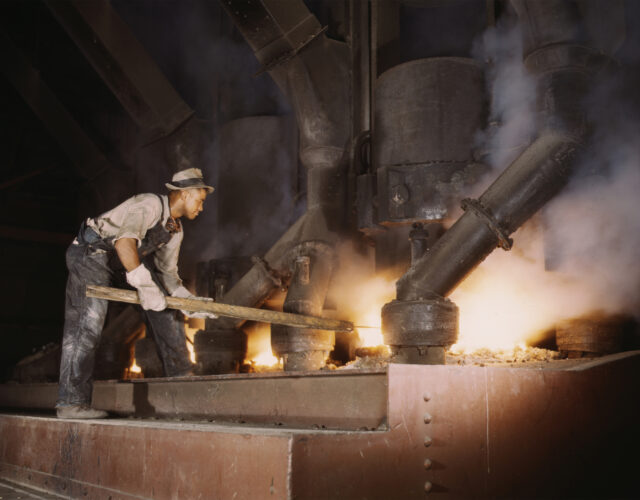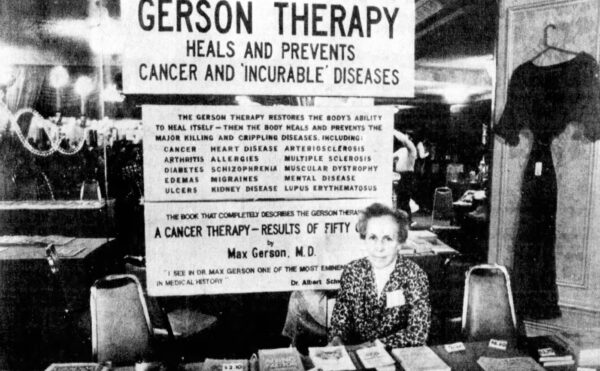Nitrogen is one of those seemingly mundane elements with a surprisingly lively history. Nineteenth-century scientists recognized it as an essential nutrient for plants and therefore a key component of fertilizer. Frustratingly, though, the most common form of nitrogen around us—the N2 in the air—isn’t palatable to plants. They simply can’t use it. Just as you or I would die of thirst if stranded in the middle of the ocean, so too most plants would starve if their roots were left suspended in air. Even more frustrating for chemists of the 19th century was their inability to synthesize the forms of nitrogen that plants do use, and this failure made natural deposits of nitrogen-rich substances, like bird guano, quite valuable. In the 1860s Spain and its former colonies even went to war over guano-rich islands off Peru.
All this scrambling for nitrogen ended exactly one century ago. In 1909 German chemist Fritz Haber discovered a method for converting N2 into ammonia (NH3), a much more useful form. Then in 1913 another German chemist, Carl Bosch, figured out how to scale up Haber’s reaction, making the industrial production of fertilizers possible. In tandem these were two of the most important discoveries in history: without the Haber-Bosch process, one out of every two people on Earth wouldn’t exist.
Still, plants need more nutrients than nitrogen alone. They need potassium and sulfur and even obscure elements like molybdenum. Perhaps most important, they need phosphorus to help form the backbone of DNA and to power their cells. Unfortunately, the world’s phosphorus supplies may soon run low—prompting the need for a new Haber-Bosch process, for element 15, for the upcoming century.
Most of the phosphorus that ends up in fertilizers is extracted from phosphate-rich rocks. Phosphate mining began in earnest after 1938, when U.S. President Franklin Roosevelt—despite the ongoing Great Depression and a looming world war—took the time to give a speech about chemistry. Specifically, he warned farmers about the rapid depletion of phosphorus in U.S. soil, mostly due to decades of intensive agriculture. History is now repeating itself because after 75 years of intensive mining, the purest, most available sources of phosphorus are running low.
How soon might we face a shortage? It’s a tricky question. Some scientists argue it could happen in as little as 30 or 40 years; others say hundreds. Some of those figures are based on estimates, provided by mining companies, of how much extractable ore exists in their territories. Not to put too fine a point on it, but mining companies have an interest in exaggerating such figures in order to spur investment. Analysts also disagree on whether certain known sources of ore—like those in Morocco, which has vast but untapped deposits—will ever be feasible to mine.
Regardless, there’s a growing concern that much of the easy phosphorus has already been stripped out of the ground. In some circles scientists talk about “peak phosphorus,” the idea that phosphorus production could level off within a few decades, at which point the world might face skyrocketing prices and widespread shortages. That phrase echoes similar concerns about peak oil, but peak phosphorus could be worse in some respects. We can at least envision alternatives to petroleum, like solar power or hydrogen. There’s no substitute for phosphorus.
So what strategies might latter-day Habers and Bosches pursue? For one, they could figure out a better biochemical delivery vehicle so plants absorb phosphorus more readily. (Currently, plants slurp up just one-fifth of the phosphorus applied to them; the rest leaches away.) Or scientists could figure out better ways to extract phosphorus from the ground. The continental shelves, although underwater and tricky to mine, contain loads of phosphorus, and many rock formations contain the element at low concentrations. But no one knows how to vacuum all those stray molecules up without doing massive damage to the environment. That’s where the genius is needed.
Another strategy involves recycling urine. (The German alchemist Hennig Brand actually discovered phosphorus in 1669 by collecting gallons of his urine and boiling it down.) Entrepreneurs have already invented “no mix” toilets that shunt number one and number two into different tubes and capture the urine for processing. These special toilets show promise because they’re a passive technology: people install them once, and pipes do the rest.
Given the poor historical track record of prophecies about resource shortages and food calamities, odds are peak phosphorus won’t destroy civilization. But just because we won’t face Malthusian starvation doesn’t mean we won’t have significant problems. People said of Haber and Bosch in the last century that they alchemized the very air into food. Securing a stable supply of phosphorus may require similar chemical magic.




